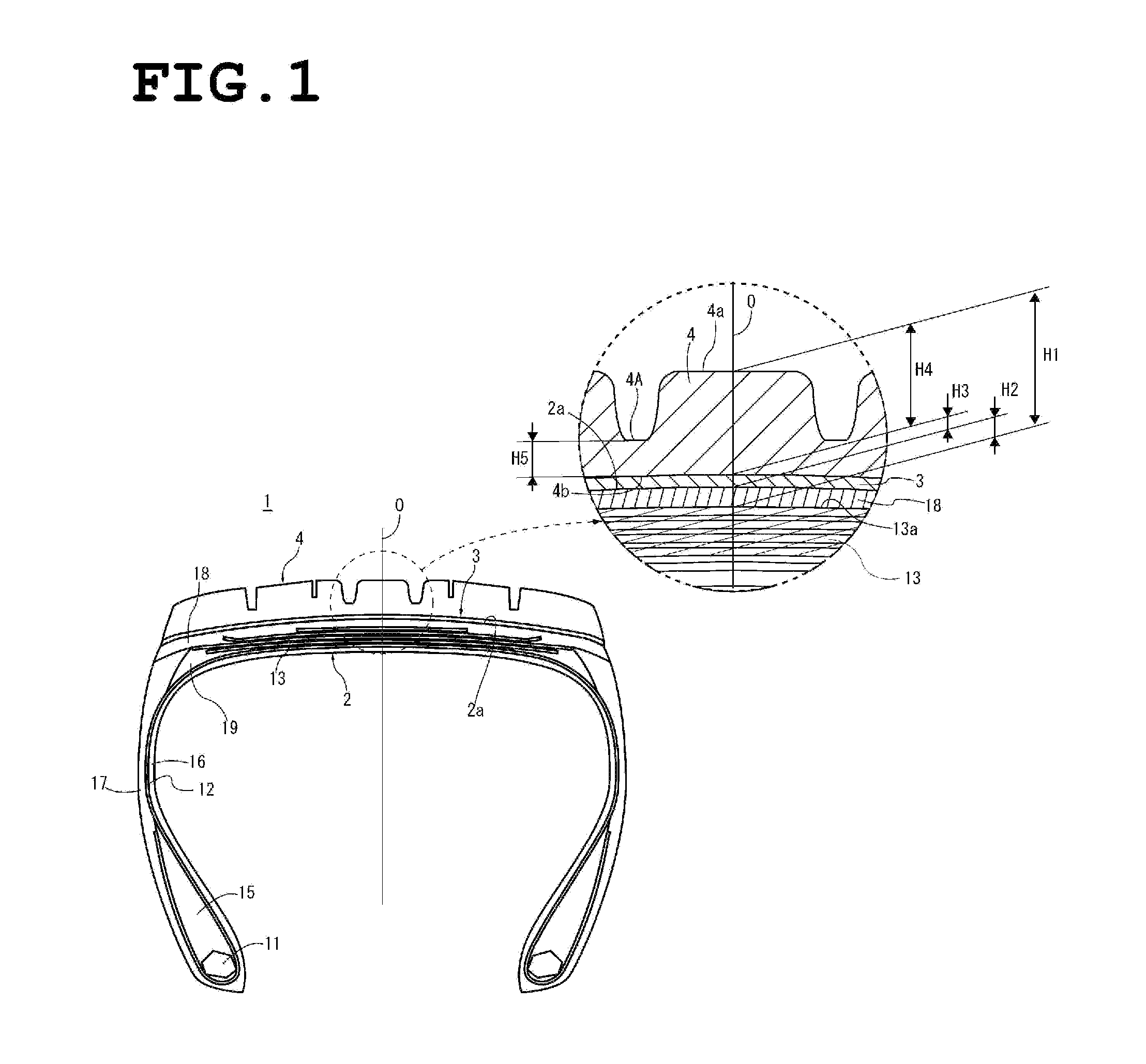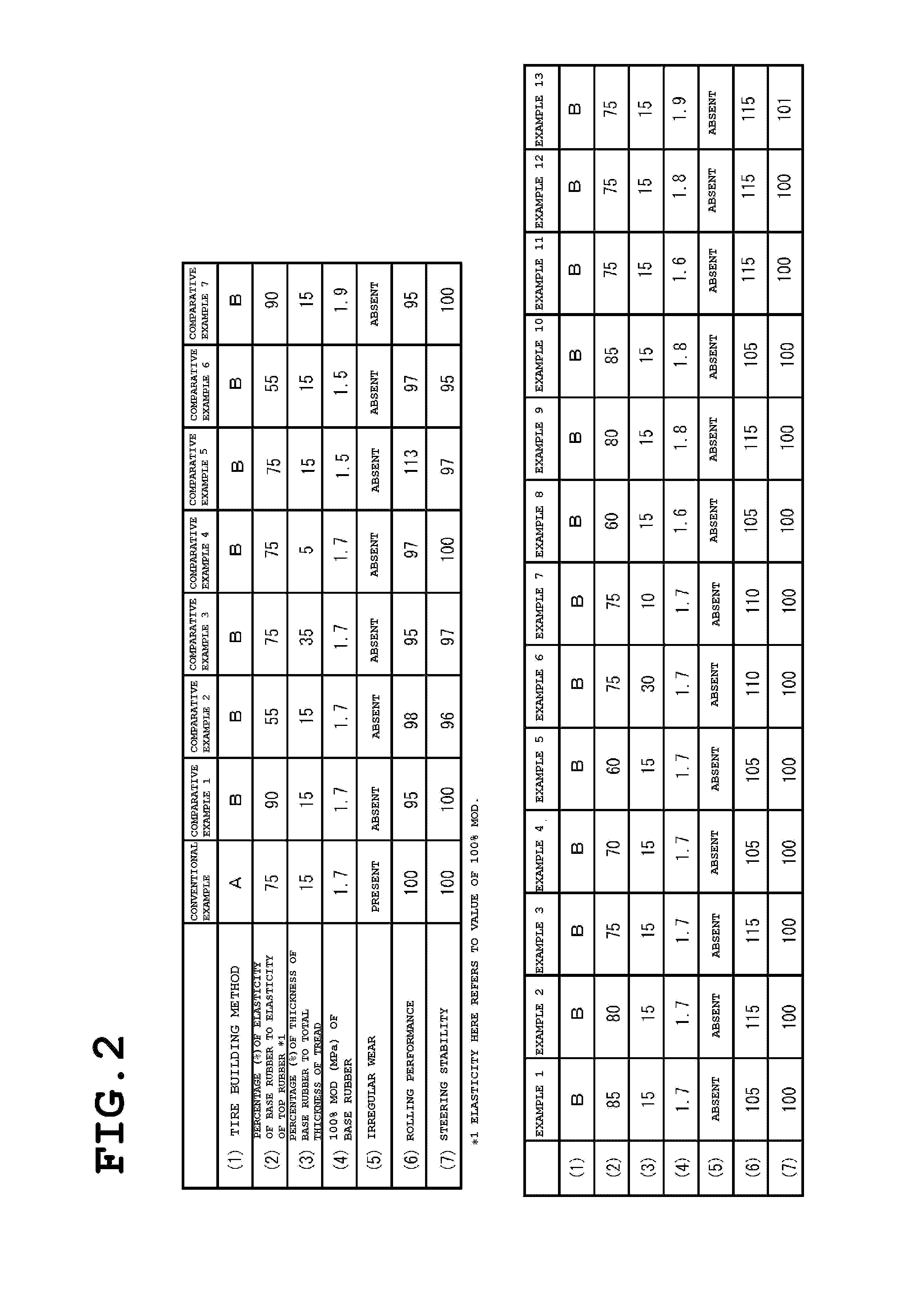Tire manufacturing method and tire
- Summary
- Abstract
- Description
- Claims
- Application Information
AI Technical Summary
Benefits of technology
Problems solved by technology
Method used
Image
Examples
examples
[0040]Hereinbelow, a detailed description is given of the performance of tires manufactured according to the present invention by the use of Examples.
[0041]FIG. 2 is a table showing the performance values of tires manufactured by the tire manufacturing method of the present invention (Examples 1 to 13), a tire manufactured by a conventional tire manufacturing method (Conventional Example), and tires manufactured as comparative examples by the tire manufacturing method of the present invention (Comparative Examples 1 to 7). In the tire building method of item (1) in the table of FIG. 2, A represents a tire manufactured by a conventional tire manufacturing method in which an uncured top rubber is placed on the base rubber of an uncured base tire before they are integrated together in a mold, whereas B represents a tire having a top rubber 4 and a base tire 2 integrated together after they are cure-molded individually. Item (2) is the modulus of elasticity of the base rubber 18 represe...
PUM
 Login to View More
Login to View More Abstract
Description
Claims
Application Information
 Login to View More
Login to View More - R&D
- Intellectual Property
- Life Sciences
- Materials
- Tech Scout
- Unparalleled Data Quality
- Higher Quality Content
- 60% Fewer Hallucinations
Browse by: Latest US Patents, China's latest patents, Technical Efficacy Thesaurus, Application Domain, Technology Topic, Popular Technical Reports.
© 2025 PatSnap. All rights reserved.Legal|Privacy policy|Modern Slavery Act Transparency Statement|Sitemap|About US| Contact US: help@patsnap.com



